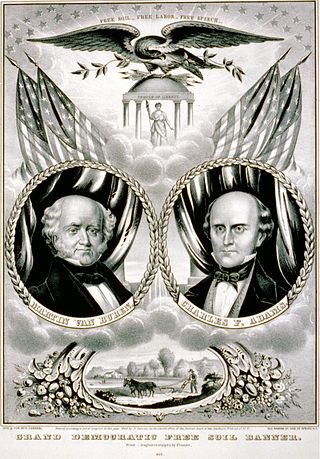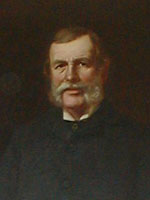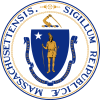
Presidential elections were held in the United States on November 2, 1852. Democratic nominee Franklin Pierce defeated Whig nominee General Winfield Scott.

Presidential elections were held in the United States on November 4, 1856. Democratic nominee James Buchanan defeated Republican nominee John C. Frémont and Know Nothing/Whig nominee Millard Fillmore. The main issue was the expansion of slavery as facilitated by the Kansas–Nebraska Act of 1854. Buchanan defeated President Franklin Pierce at the 1856 Democratic National Convention for the nomination. Pierce had become widely unpopular in the North because of his support for the pro-slavery faction in the ongoing civil war in territorial Kansas, and Buchanan, a former Secretary of State, had avoided the divisive debates over the Kansas–Nebraska Act by being in Europe as the Ambassador to the United Kingdom.

The Free Soil Party, also called the Free Democratic Party or the Free Democracy, was a political party in the United States from 1848 to 1854, when it merged into the Republican Party. The party was focused on opposing the expansion of slavery into the western territories of the United States. The 1848 presidential election took place in the aftermath of the Mexican–American War and debates over the extension of slavery into the Mexican Cession. After the Whig Party and the Democratic Party nominated presidential candidates who were unwilling to rule out the extension of slavery into the Mexican Cession, anti-slavery Democrats and Whigs joined with members of the Liberty Party to form the new Free Soil Party. Running as the Free Soil presidential candidate, former President Martin Van Buren won 10.1 percent of the popular vote, the strongest popular vote performance by a third party up to that point in U.S. history.

The 1856 Republican National Convention was a presidential nominating convention that met from June 17 to June 19, 1856, at Musical Fund Hall at 808 Locust Street in Philadelphia, Pennsylvania. It was the first national nominating convention of the Republican Party, founded two years earlier in 1854. It was held to nominate the party's candidates for president and vice president in the 1856 election. The convention selected John C. Frémont, a former United States Senator from California, for president, and former Senator William L. Dayton of New Jersey for vice president. The convention also appointed members of the newly established Republican National Committee.

Henry Joseph Gardner was the 23rd Governor of Massachusetts, serving from 1855 to 1858. Gardner, a Know Nothing, was elected governor as part of the sweeping victory of Know Nothing candidates in the Massachusetts elections of 1854.

The 1856 Whig National Convention was a presidential nominating convention held from September 17 to September 18, in Baltimore, Maryland. Attended by a rump group of Whigs who had not yet left the declining party, the 1856 convention was the last presidential nominating convention held by the Whig Party. The convention nominated a ticket consisting of former president Millard Fillmore and former ambassador Andrew J. Donelson; both had previously been nominated by the 1856 American National Convention. The Whig ticket finished third in the 1856 presidential election behind the winning Democratic ticket of James Buchanan and John C. Breckinridge and the runner-up Republican ticket of John C. Frémont and William L. Dayton.

The 1848 Whig National Convention was a presidential nominating convention held from June 7 to 9 in Philadelphia. It nominated the Whig Party's candidates for president and vice president in the 1848 election. The convention selected General Zachary Taylor of Louisiana for president and former Representative Millard Fillmore of New York for vice president.
The 1856 Democratic National Convention was a presidential nominating convention that met from June 2 to June 6 in Cincinnati, Ohio. It was held to nominate the Democratic Party's candidates for president and vice president in the 1856 election. The convention selected former Secretary of State James Buchanan of Pennsylvania for president and former Representative John C. Breckinridge of Kentucky for vice president.

Millard Fillmore was the 13th president of the United States, serving from 1850 to 1853, and was the last president to have been a member of the Whig Party while in office. A former member of the U.S. House of Representatives, Fillmore was elected the 12th vice president in 1848, and succeeded to the presidency when Zachary Taylor died in July 1850. Fillmore was instrumental in passing the Compromise of 1850, which led to a brief truce in the battle over the expansion of slavery.

The 1856 United States elections elected the members of the 35th United States Congress and the President to serve from 1857 until 1861. The elections took place during a major national debate over slavery, with the issue of "Bleeding Kansas" taking center stage. Along with the 1854 elections, these elections occurred during the transitional period immediately preceding the Third Party System. Old party lines were broken; new party alignments along sectional lines were in the process of formation. The Republican Party absorbed the Northern anti-slavery representatives who had been elected in 1854 under the "Opposition Party" ticket as the second-most powerful party in Congress. Minnesota and Oregon joined the union before the next election, and elected their respective congressional delegations to the 35th Congress.

The 1856 New Jersey gubernatorial election was held on November 4, 1856. William A. Newell, running on a fusion ticket opposed to the Franklin Pierce administration, defeated Democratic nominee William Cowper Alexander with 51.29% of the vote.

The 1856 United States presidential election in Mississippi was held on November 4, 1856. Mississippi voters chose seven electors to represent the state in the Electoral College, which chose the president and vice president.
The 1856 American National Convention was held in National Hall in Philadelphia, Pennsylvania, on February 22 to 25, 1856. The American Party, formerly the Native American Party, was the vehicle of the Know Nothing movement. The convention resulted in the nomination of former President Millard Fillmore from New York for president and former Ambassador Andrew Jackson Donelson from Tennessee for vice president.

The 1854 Massachusetts gubernatorial election was held on November 15. American Party candidate Henry J. Gardner was elected to his first term as governor, defeating incumbent Whig governor Emory Washburn.

The 1855 Massachusetts gubernatorial election was held on November 6. Know-Nothing candidate Henry J. Gardner was re-elected to a second term as Governor in a multi-partisan race, defeating Republican Julius Rockwell and Democrat Erasmus Beach.

The 1857 Massachusetts gubernatorial election was held on November 3. Incumbent Know-Nothing governor Henry J. Gardner ran for a fourth term in office, but lost the support of the Republican Party, which nominated Speaker of the United States House of Representatives Nathaniel P. Banks. Banks prevailed over Gardner to become the first Republican governor of Massachusetts.

The 1860 Massachusetts gubernatorial election was held on November 6. Incumbent Republican governor Nathaniel Banks did not run for re-election to a fourth term. He was succeeded by Republican John Albion Andrew, a radical abolitionist.

The 1852–53 Massachusetts gubernatorial election consisted of an initial popular vote held on November 8, 1852, followed by a legislative vote conducted on January 12, 1853, which elected Whig Party nominee John H. Clifford. The ultimate task of electing the governor had been placed before the Massachusetts General Court because no candidate received the majority of the vote required for a candidate to be elected through the popular election.

The 1850–51 Massachusetts gubernatorial election consisted of an initial popular held on November 11, 1850 that was followed by a legislative vote that was conducted on January 11, 1851. It saw the election of Democratic Party nominee George S. Boutwell. The ultimate task of electing the governor had been placed before the Massachusetts General Court because no candidate received the majority of the vote required for a candidate to be elected through the popular election.

The 1844 New York gubernatorial election was held on November 5, 1844. Incumbent Governor William C. Bouck lost his bid for nomination to U.S. Senator Silas Wright. In the general election, Wright defeated former U.S. Representative and future President of the United States Millard Fillmore.





















